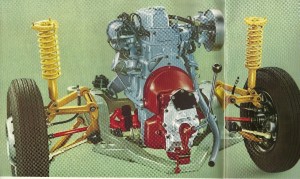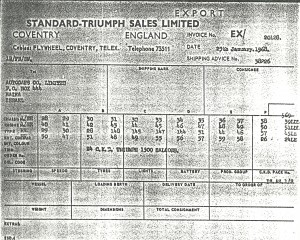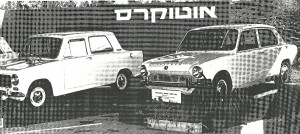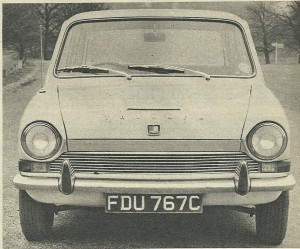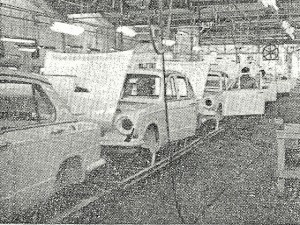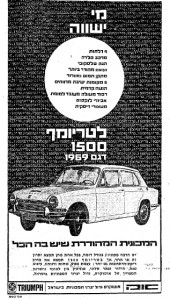1. The Triumph 1300, launched in the UK in August 1965, boasted the latest in small car design with a front driven, front engine vehicle, equipment over and above its category standard and an elegant, modern, Italian styling. The press loved it, but quality left something to be desired. When British Leyland replaced the 1500 in the British market, in 1973, it did so with a conventionally-driven car – a rear wheel drive one.
2. The 1300 was Standard-Triumph’s offering to Autocars when it entered into partnership with the Israeli firm of Tirat Carmel. In 1965 Leyland management promises the Israel government a production volume of no less than 5000 units a year, a fictional figure for any one car model in Israel at the time, most certainly for a car that was to be quite expensive. Also promised were exports of 750 units a year.
3. The Triumph’s introductory price in May 1968 was IL 14,890. The also-new Ford Escort, while certainly a lot more modest, was retailed for IL 11,760 only.
4. Prior to its launch in England, a “prototype” (probably a pre-production car) 1300 was delivered to Israel for an up close examination. It was accompanied by “an engineer driver from our Coventry factories and will be available for demonstrations to and test by your government’s officials”.
5. When the Triumph was eventually launched in Israel, at a customary delay of a year and a half compared with the original plan, it was equipped with a 1493cc engine, and marketed as the Triumph 1500. The reasoning was the refusal of the local ministries to approve the sale of a 1300cc family car, as that would allegedly be in direct competition with another Israeli-assembled vehicle, Illin’s Hino Contessa.
6. The Contessa, a conservative Japanese product, was as different as was possible from the adventurously-designed, inferior-quality, Triumph. At least in one aspect they were identical. In both cases styling was handed over to Giovanni Michelotti of Turin.
7. The very last Contessas were assembled in Haifa in March 1968. Illin shut down the plant the next January. Two months later the Government forced Autocars to purchase the plant and keep the production lines running. After a short while, Triumph’s assembly was re-located across Mount Carmel, to the ex-Illin plant. Later on, in August 1969, Autocars starts the assembly of Triumphs with the 1296cc powerplant. Not surprisingly, this did not stop it from installing the 1300 engine also in sets that were earmarked for the 1500 engine.
8. The Triumph 1500 FWD was sold in two markets only -Israel and South Africa. For both, the cars were delivered in CKD form. The 1493 engine made its first showing in a UK-made Triumph only two years later, and in the meanwhile Triumph made a very long-running validation test in Israel. As always, Ephraim Kishon described it best: “[it is] a British-Israeli co-production: the car itself is from England, the steering is made in Israel, so there still are some difficulties with it, but the public is willing to buy the car without a steering” [the last three words double in Hebrew for ‘without saying a word’].
9. The front wheel drive, north-west engine made it relatively easy for Standard to fiddle with the idea of a 1300-based 4×4 version. Other than a Rally version 1300, which has never been marketed, Standard had already in 1965 developed its own “Unimog” prototype with a GRP body. Named the Pony (later: Dragoon), it was to be built and marketed exclusively by Autocars. Hopes were high but the Pony was never type approved for sale inIsraeland had no real chance overseas.
10. As was often the case, Triumph continued to provide Autocars with kits for the 1300 even after production in England ceased, in summer 1970. In November 1971 the British pulled out of Autocars and the company went into receivership. The last Triumph 1300 was assembled in Israel in June 1973. In total, Autocars assembled 2,493 TR1300 and 1,223 TR1500.

